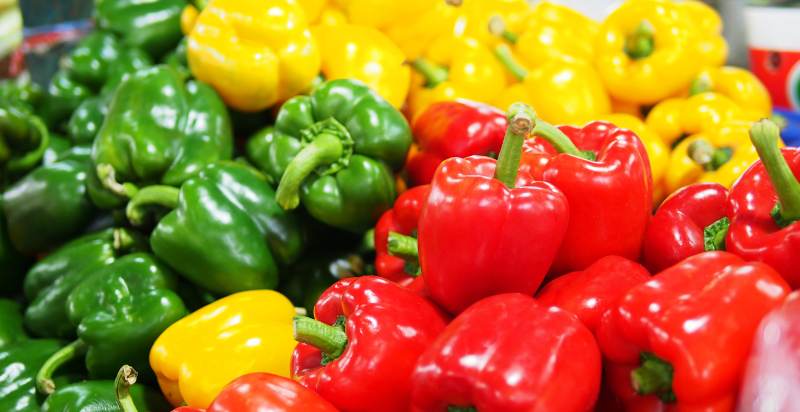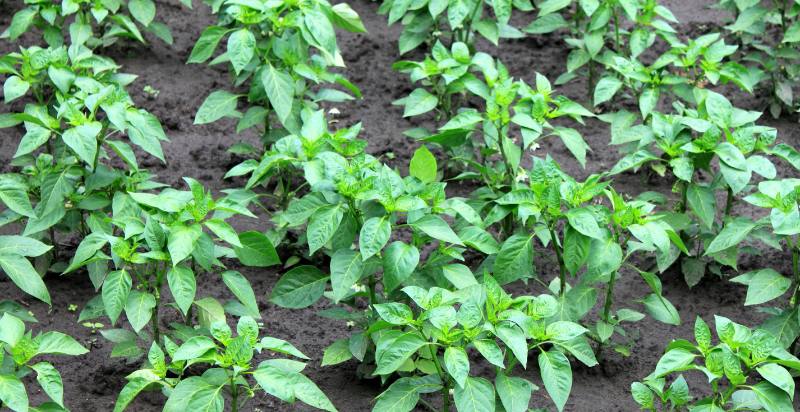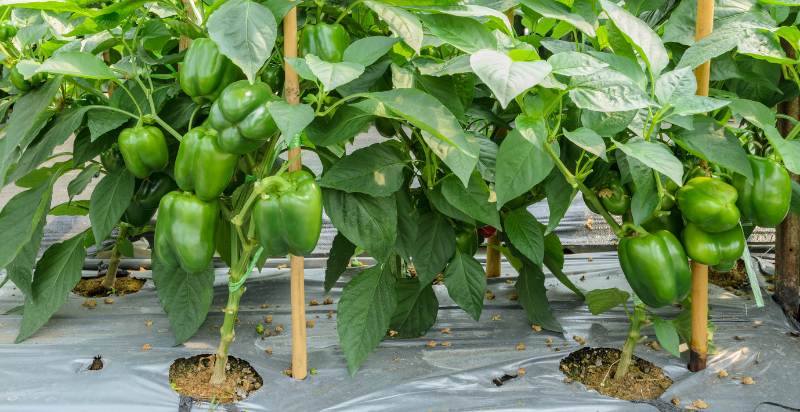Bell pepper is a popular vegetable belonging to the Capsicum annuum. It is an annual plant, producing a new crop each year. The bell pepper has many different shapes and sizes, ranging from sweet bells to long chili peppers. According to where you reside, bell peppers might also be called sweet peppers or capsicums. What you should know about bell peppers is provided below:
What Is Bell Pepper?
Bell pepper is a type of fruit that belongs to the nightshade family. It has a mild, sweet flavor and comes in several colors, including green, red, yellow, orange, purple, and black. Bell peppers are usually eaten raw or cooked for added flavor. They can also be used in many recipes like sauces, salads, soups, and stir-fries.
History and Origin of Bell Pepper:
The bell pepper originally hails from Central and South America. It was first grown by the Aztecs, who referred to it as “chili” or “achiote.” The Spanish conquistadors brought this vegetable back to Europe in the 17th century. From there, it quickly spread around the world. Nowadays, Bell peppers are cultivated in many countries across the globe.
Types of Bell Pepper:
The primary types of bell pepper are sweet bells and chili peppers. Sweet bells are usually larger and have a mild flavor, while chili peppers have a stronger taste and can range from very mild to extremely hot. Other varieties include the paprika pepper, jalapeno pepper, habanero pepper, cayenne pepper, and poblano pepper.

Description of Bell Pepper:
Bell peppers are typically round or slightly rectangular. They have thick, smooth skin that can be any shade from green to yellow, orange, red, and even purple. Inside the pepper is a hollow cavity filled with tiny white seeds. Bell peppers are crunchy and juicy when eaten raw and have a sweet flavor.
Cultivation of Bell Pepper:
Bell peppers are usually grown in warm climates and require full sun for optimal growth. They need well-drained soil with a pH between 6.0 and 7.5 and plenty of water. Bell peppers can be harvested when they reach the desired size and color or left on the plant until fully mature.
Health Benefits of Bell Pepper:
Bell peppers are a good source of vitamins and minerals. They are particularly high in vitamin C, which helps boost the immune system and protect against cellular damage. Bell peppers also contain vitamins A and B6, folate, fiber, and potassium. Eating bell peppers may help reduce inflammation, improve heart health, and promote skin health.
Nutritional Value of Bell Pepper:
Bell peppers are an excellent source of vitamins A and C and dietary fiber. They contain several other essential minerals and nutrients, including calcium, iron, magnesium, phosphorus, potassium, zinc, and carotenoids. Eating bell peppers can help keep your body healthy and strong.
Uses of Bell Pepper:
Bell peppers can be eaten raw, cooked, or roasted. They are used in many dishes, including salads, sandwiches, stir-fries, soups, and stews. The juice of bell peppers is also popular as a drink or ingredient in smoothies and juices. Bell peppers are also dried to make paprika powder, a common ingredient in many recipes.
Bell peppers are an incredibly versatile, nutritious, and delicious vegetable. They can be eaten raw or cooked, used as an ingredient in dishes, or made into drinks. Bell peppers are also rich in vitamins and minerals that help keep your body healthy and strong. So, make sure to include bell peppers in your diet, and if you are looking at how to grow Bell peppers, then here is everything you need to know :
How to Plant Bell Peppers?
Bell peppers can be easily grown in the garden or containers. They prefer full sun and need well-drained soil with a pH between 6.0 and 7.5. Plant bell peppers when the danger of frost has passed, usually around mid-spring. Make sure to choose a sunny location that is sheltered from strong winds. Plant the seeds 1/2 inch deep and keep them moist until they germinate, which usually takes about 10 days. Once the seedlings emerge, thin them out to give each plant enough space to grow.

How to Care for Bell Pepper Plant?
Bell peppers require a lot of water while they are growing. Plan on receiving roughly an inch of water per week from irrigation or rainfall. Additionally, mulching the area around the pepper plants can assist the soil in retaining moisture and controlling weed growth. During the growing season, fertilize every two to three weeks using a balanced fertilizer.

Preventions from Pests and Diseases:
Bell peppers are susceptible to pests, such as aphids and flea beetles. Handpicking these insects off the plants can help keep them in check. Blight, a fungal disease caused by wet weather conditions, can also affect bell peppers. To prevent blight, avoid overhead watering and clean up any fallen leaves or fruits.
Harvesting Bell Peppers:
Bell peppers can be harvested when they reach the desired size and color or left on the plant until fully mature. Fully ripe peppers will be firm and will have a deep color. Cut them from the plants with scissors or a sharp knife. Store bell peppers in the refrigerator for up to two weeks.

How to Store Bell Peppers?
In the refrigerator, bell peppers can be kept for up to two weeks. They can be canned or frozen to preserve them for longer. Bell peppers should be blanched in boiling water for 2 minutes, then swiftly cooled in an ice water bath if you want to freeze them. Peppers that have cooled should be put on a baking sheet and frozen until solid.
When the peppers are frozen, move them to a freezer-safe bag or container for long-term preservation. Fill clean jars with boiling water and add bell peppers to the can. The jars should have lids before processing in a hot water bath for 10 minutes. Before keeping them for up to a year in a cool, dark location, let the jars cool.
Potential Risk from Bell Peppers:
Bell peppers are generally safe to eat. However, they can cause allergic reactions in some people. Symptoms of an allergy can range from mild rashes to life-threatening anaphylaxis. If you experience symptoms after eating bell peppers, it’s important to seek medical help immediately. It is also important to note that bell peppers can contain traces of pesticides and other chemicals, so it is important to buy organic whenever possible. Additionally, avoid eating bell peppers that are discolored or have soft spots.
Conclusion
Bell peppers are an incredibly versatile, nutritious, and delicious vegetable. They can be eaten raw or cooked, used as an ingredient in dishes, or made into drinks. Bell peppers are also rich in vitamins and minerals that help keep your body healthy and strong. To grow bell peppers, choose a sunny location with well-drained soil.
Looking to add some heat to your meals? Meet Capsicum Chinense – the pepper with a fiery personality! Join us as we explore the fascinating world of Capsicum Chinense in our article, revealing its origins, unique flavor, and how it can revolutionize your cooking!
- Everything You Wanted to Know About Red Tamarillos - June 2, 2025
- A Guide to Tulips: Everything You Need to Know & More… - June 2, 2025
- Guanabana: Description, Flavor, Benefits, And Uses - May 27, 2025

56 thoughts on “What is Bell Pepper? How to Plant, Grow, and Harvest Capsicum”
Comments are closed.